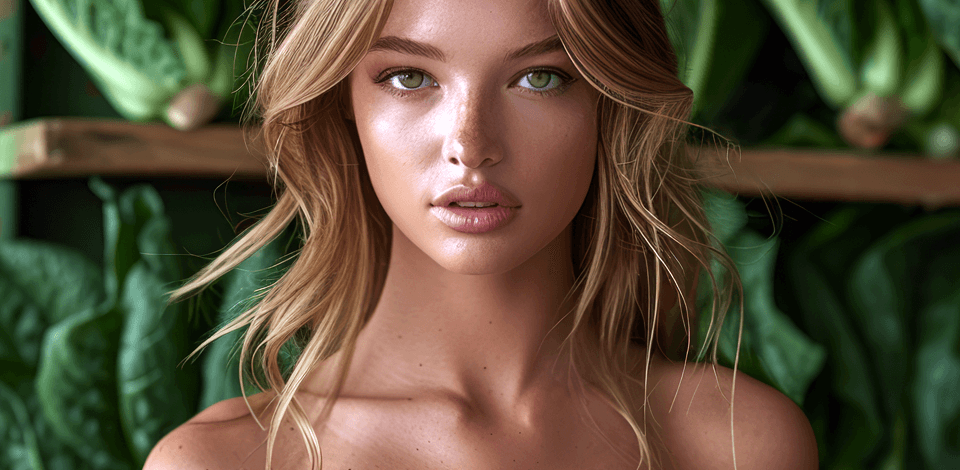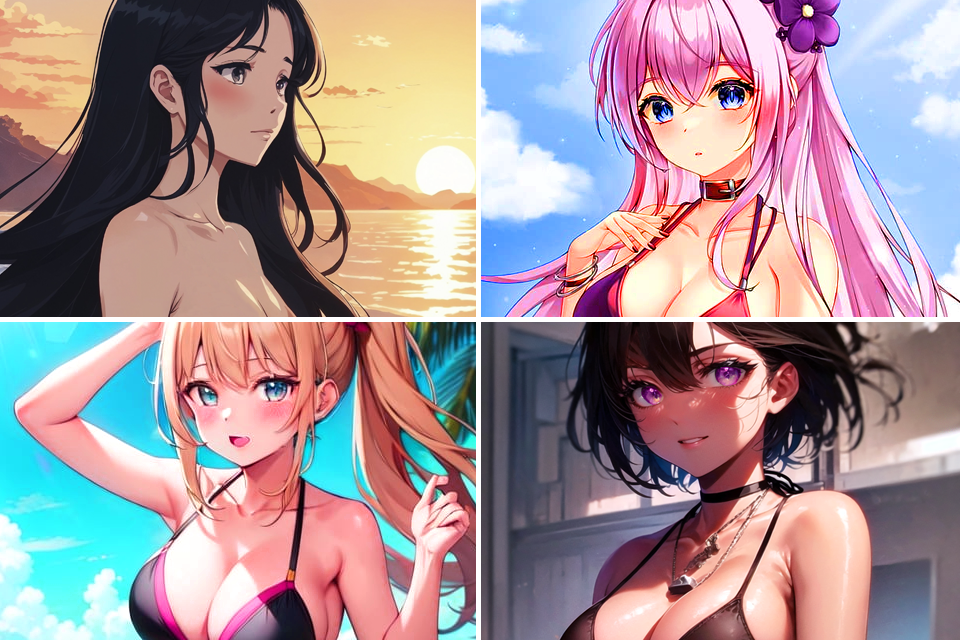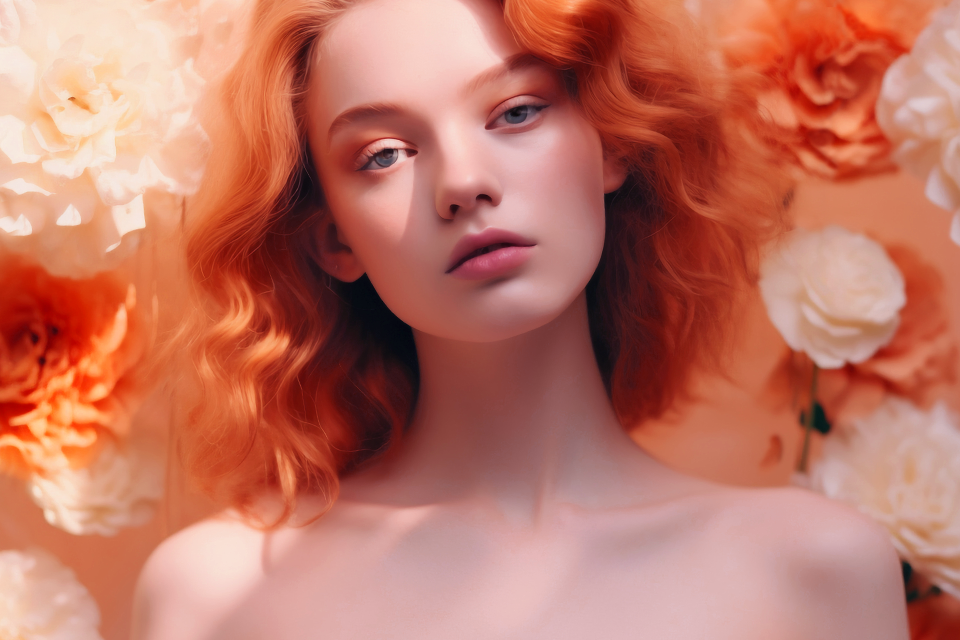
An AI nude generator is a type of software that uses artificial intelligence to change pictures, usually by removing clothes or making fake nude images of woman and men. These tools use smart programs that learn from large collections of human body images and clothes. Although some of the AI nude generators are promoted as tools that can be used for harmless or artistic reasons, most of the time, they are misused in ways that hurt people's privacy.
These AI fake nude generators cause big problems because they use AI to make explicit pictures of people without their permission. Many of these tools also work through hidden or hard-to-find websites, making it harder to hold anyone accountable or implement regulations to control what happens.

Together with Tati Taylor we started by searching ai nude generators on Google to see what tools were out there. We found different websites, online tools, apps and even PC software, some of them asked us to upload pictures, while others only needed text prompts.
Then, we tested several of these tools to see how they worked, how reliable they were, and what kind of results they delivered.
These tools stated they could create realistic images, but, fortunately, when I tried them, the results weren’t as lifelike as promised. Most of the time, the pictures turned out strange with extra legs or eyes, some kind of creepy, or even funny.
To get better results, we tried creating examples of fine art nude photography. We tested a variety of prompts, from simple body shapes to more detailed descriptions. We also used different AI nude picture tools inside one editor to see how consistent the pictures were. The testing process took a lot longer than I anticipated.
I uploaded my own full-body photo to see if the tool could give me a realistic nude transformation, but the ai photo results were weird. In one case, the skin looked rough and fake, almost like plastic. In another, the AI nude generator mixed the clothes into the skin, making it look fake.
The eyes were a big problem. Most of the time, they looked blank or didn’t fit with the face at all. The skin also didn’t look right. There were random blurry or too-smooth spots that didn’t match the rest of the body.
Sometimes, the AI would add extra body parts by accident. One tool gave my figure two right arms, and another one added what looked like a ghost leg in the background.
Another ai issue with these tools is that they often need multiple tries to get a decent outcome. The lighting and shadows were off, making the pictures look fake, with no real depth or dimension.
I soon realized that getting a reasonable result meant a lot of trial and error. Every time I changed something, I had to wait for the AI nude generator to process the image, and most of the time, I ended up with strange or disappointing output.
When I used text prompts like a realistic image of a person with light brown hair and a slim figure,” he results were inconsistent. While testing with my colleague, we found that the faces were often too basic and didn’t match what I was expecting. Even worse, we couldn’t get the same face twice, even if we used the exact same prompt.
One of the AI nude generators even tried to copy specific facial features based on the descriptions, which made me worried about privacy and identity theft.
The AI also had trouble with proportions, making features look unrealistic. For example, sometimes the torso was way too long, or the arms were too short. When I gave unclear prompts, the results were generic. But when I gave more detailed prompts, the images were often over-edited and looked odd.
Even though these tools promised realistic results on their main website pages, most of the images had big problems, like distorted faces or weird lighting that didn’t match the rest of the picture.
One thing I noticed with AI nude pic generators is that many of these websites don’t stay around for long. They usually disappear or change their names after a few months. Most of these tools asked me to sign up, and many of them charged money. Even the free ones required me to create an account to use them.
Together with Tati we also saw lots of annoying ads everywhere, at first, in the editor, then on my email. Nearly every one had pop-up ads, banners, fake download links, and some websites even tried to sell extra paid features that didn’t seem necessary.

❌ Unauthorized use of personal data. One big problem is that AI fake nude tools often use people's photos without asking them first like one of my tests showed above when took a part of my face for a newly generated photo. These pictures are usually taken from social media or other public places without the person's consent. This is a serious violation of privacy and makes people lose trust in online platforms.
❌ Potential for misuse. AI nude generators can create fake nude images of people, and these images might be used to blackmail, bully, or embarrass someone. This can cause a lot of emotional pain and stress, and sometimes even lead to legal and financial problems for the person whose image was used.
❌ Right to privacy and respect. These AI can take away a person’s right to privacy and dignity, turning them into objects of exploitation. Everyone deserves respect and their personal rights should be protected, so AI technology should not violate those basic rights and even try to find such issues online.
❌ Cultural problems. AI nude generators can help spread harmful ideas about people. It’s important to think about how these tools affect society and work towards a culture that values respect and dignity for everyone.
❌ Emotional effects. People whose images are misused or turned into fake nudes can feel very hurt. They might become anxious, depressed, or lose trust in social media.
❌ Spreading lies. For me it’s deepfake technology, which can create fake but lifelike images or videos. This can be used to spread false information, trick people, or even affect important things, for example, political events. Making fake nudes is another dangerous way these tools can be used.
Privacy laws are different in every country, but they all try to protect people from having their personal information used without permission. AI fake nude generators are in a tricky situation because the laws don't really cover this kind of technology yet.
In the U.S., different states are starting to make their own laws about this. Some states, like California, Texas, and Virginia, have passed laws to stop people from using AI to make fake nude images without permission. For example, California's law (AB 602) allows people to sue if their image is used in a fake sexual picture without their consent. Texas also has laws that make it a crime to create or share fake nude images.
In the European Union, the laws are getting tougher. The Digital Services Act (DSA) and the AI Act are rules that make companies liable for letting illegal content, like fake nude images, stay on their websites. If these companies don’t remove the harmful content quickly, they could face big fines.
There are also rules like the General Data Protection Regulation (GDPR) that help protect people’s personal information. These rules might also apply to cases where AI is used to make fake nude images. Another area is intellectual property rights (IPR), which protect people's creations, like pictures or videos. This could also be a question with AI-made nude images.
In Asia, countries like Japan and South Korea are also taking action. South Korea passed a law that punishes people harshly for making or sharing fake explicit images, especially when AI art generators or deepfake technology is used.
In 2023, a teenager from New Jersey sued a classmate for sharing AI-generated fake pornographic images of her and other students. The case got a lot of attention and showed how serious the problem is. The lawsuit requested $150,000 for each time a nude image of her was disclosed.
In January 2024, fake nude images of Taylor Swift were shared widely on social media, getting millions of views before they were taken down. Taylor Swift hasn’t sued anyone over these AI-generated nude images yet, but she’s always spoken up about protecting her image and personal rights. Her team is also prompting a change in the laws to better handle issues caused by deepfake technology.
Scarlett Johansson has spoken out about her struggles with fake nude images created using deepfake technology. She hasn’t sued anyone yet, but her experience shows how hard it is to fight fake videos or pictures because the internet isn’t properly regulated. She has said it’s almost impossible to stop every fake image from spreading. Her case shows why we need better laws to stop AI from being misused.
Gal Gadot was one of the first celebrities targeted by AI-generated fake nude images. Although she hasn’t announced that she’s suing anyone, her situation has started conversations about the problems with this technology. Her case highlights how AI can be used to hurt famous people, and it’s made people call for stronger regulations to stop it.
It’s not just women who are affected. Tom Cruise has also had his images changed to make fake explicit content. His legal team has been active, using laws about copyright and impersonation to fight against the misuse of his image.
One of the best and most ethical alternatives to AI nude art generators is our FixThePhoto Body Editor&Tune app. This app was made by our team of true digital photo experts who focus on improving boudoir or swimsuit photos. Our retouchers also ensure your pictures won’t be used without your permission.
For example, if you want to improve your boudoir photos, you can upload them to the app, tell them what changes you want, and get high-quality edits in just 15 minutes. The app delivers realistic outcomes, with no weird AI effects. Plus, your first photo edit is free, and there will be no watermarks on it. Also, the app can be used to fix clothing, blur backgrounds, and more.
Another way to create tasteful nude art is by using traditional digital art programs like Photoshop, Procreate, Canva, Fotor, and others. These tools give artists full control over their work and allow them to create custom digital drawings. All FixThePhoto retouchers use Photoshop and other Adobe suite tools to create digital nude art or other artistic pictures that follow ethical regulations.
Stock photography sites like Shutterstock or Adobe Stock have lots of professionally made nude photos and digital art. These images are created by professional photographers and artists who make sure they have permission from the models. This makes them a safe and ethical choice compared to using AI-generated fake nude pics.
If you want something more personal, you can hire an artist to create custom nude art or digital paintings just for you. This way, you can make sure the work is done ethically, with both you and the artist giving consent to the use of the images. You’ll have full control over how the art turns out, and you’ll also be supporting talented artists.
After trying out so many AI nude generators, I discovered that these tools still have a long way to go in terms of quality and reliability. The results were often strange, not what was promised, and didn’t look realistic.
On top of that, there were technical problems, privacy issues, and questionable practices by some platforms. Because of all this, I can’t recommend these tools to anyone who wants realistic or ethical results.
Instead of using these tools, it’s much safer and better to try alternatives like the FixThePhoto Body Editor & Tune App or other editing apps. These options give you more control, better quality, and peace of mind.